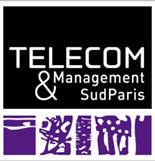

 |
The Third International Conference on Systems and Networks Communications ICSNC 2008 October 26-31, 2008 - Sliema, Malta |
|
|||||||||||
| Details: |
|
Authors of selected papers will be invited to submit extended versions to a IARIA Journal Publisher: IEEE Computer Society Conference Publishing Services Posted: IEEE Digital Library Indexing process |
Keynote Speaker: Prof. Dr. Hassan Gomaa, George Mason University, Fairfax, Virginia
Topic: Designing Evolutionary Architecture-centric Component-based Software Product Lines
Important deadlines:
| Full paper submission | |
| Authors notification | |
| Registration and camera ready | July 10, 2008 |
Tracks:
- WINET: Wireless networks
3G/4G integration; Wireless protocols, architectural and design concepts; Design and implementation of mobile information systems; Wireless communications and mechanisms; Antenna and RF subsystems; Coding & modulation & equalization; Channel modeling and characterization; Equalization/Synchronization; Wireless technologies; Wireless applications & services; IP Multimedia subsystems (IMS); Wireless and mobility; Wireless-wireline convergence; Radio communications systems; Specialized wireless networks; Management of wireless networks; Position on standards & fora on wireless networks; Business models on wireless networks; Communications regulations, Spectrum management; Software-Defined Radio (SDR) [ architectures, hardware, software, signal processing and smart antennas, etc.] - HSNET: High speed networks
Technologies, protocols, and applications for high speed networks; Voice over high speed networks; Services and interconnections of high speed networks; Technologies for High speed optical networks; Optical burst switching; End-to-end applications; Optical control plan; Advanced optical technology architectures; Design of high speed systems and networks; Methodologies and development tools for high speed networks; Management and control of high speed networks; Performance in high speed networks; Security aspects in high speed networks; QoS/SLA in high speed networks; Diagnosing high speed networks; High speed networks and NGN - SENET: Sensor networks
Architectures and protocols for wired and wireless sensor networks; Design of sensor networks; Instrumentation and models for deployment of sensors networks; Power in sensor networks; Ad hoc and wireless sensor networks; Management and control of sensor networks; Performance in sensor networks; Security and reliability aspects in sensor networks; Information assurance in sensor networks; QoS/SLA in sensor networks; Applications, case studies and prototypes with sensor networks - MHNET: Mobile and Ad hoc networks
Mobile technology and fundamentals; Analytical and validation models for mobility; Architecture and routing protocols for mobile networks; Architectures, frameworks, fundamentals on ad hoc networks; Energy efficient design, cross-layer design, scalability; MAC protocols for ad-hoc and sensor networks (801.11, Bluetooth, etc.); Data, information, and signal processing in mobile networks; Complexity analysis of mobile algorithms and protocols; Software platforms and development tools supporting mobility; QoS/SLA, access control and security in mobile and ad hoc networks; Location and mobility management; Location and service discovery in ad hoc networks; Planning, provisioning, and deployment mobility features; Directional and smart antennas for mobile and ad-hoc networks; Performance and security in ad hoc and mobile networks; Self-organization, synchronization and stability in ad hoc networks; Self-management in ad hoc and mobile networks; Ad hoc and mobile networks and autonomic computing; Mobile ad hoc platforms, systems and tools; Applications over ad hoc networks; Standards evolution on mobility and ad hoc networks - SESYS: Security systems
Security analysis methodologies; Middleware and distributed systems security; Cryptography, certificates, information hiding, access control; Protection, risk, vulnerabilities, attacks, authorization/authentication; Access control, wireless access control, broadband access control; Biometrics, smart cards, identification and trust methodologies; Certification, accreditation anonymity, and audit; Security management, emergency contingency planning, identify theft, life safety; Wireless and mobile security; Fast security associations; Electronic surveillance and e-commerce protocols; Security and trust in web-services-based applications; Peer-to-peer security, denial of services; Information survivability, insider threat protection, integrity; Intellectual property rights, privacy, legal and regulatory issues; Criminal exploitation of technology; Commercial and industrial security; Viruses, hackers, worms, spam, and other malicious code - MCSYS: Multimedia communications systems
Technologies, protocols, and mechanisms for multimedia communications; Multimedia compression mechanisms and information representation; Multimedia encoding and compression, MPEG-1 to MPEG-4, Wavelet and fractal; Multimedia frameworks, communications, and middleware; Next generation multimedia communications; Mobile multimedia communications; Methodologies and development tools for multimedia communications systems; Wireless mobile multimedia communications; Ad hoc multimedia networks; IP-based Multimedia Subsystems (IMS); QoS/SLA in mobile multimedia services and applications; Mechanisms for interactive multimedia applications; Designing and implementing interactive applications; Multimedia authoring, publishing, and right securing; Security and performance for multimedia communications; Management, QoS, and security aspects in streaming over wireless ad hoc networks; Management and control of multimedia systems; Standards protocols for multimedia communications - POSYS: Policy-based systems
Policy for automation control; Trusting policy control commands; Policy-driven autonomic organizations; Policy-based control scalability; Policy sensors for feedback control; Policy conflict detection and conflict resolution; Context-aware policy-driven adaptive frameworks; Policy integrity, trust and negotiations; Policy-based software applications; Policing pervasive computing environments; Policing on-demand systems and services - PESYS: Pervasive education system
Learning and teaching systems; E-learning methods and e-learning scenarios; Tools and architectures for mobile/ubiquitous e-learning; Cooperative learning and working; Mobile technology and education; Distance learning and education; Computers and arts; Education in developing regions; Reflection in learning software and hardware; Social impact metrics on distance learning; Methodologies and processes for education; Curriculum projects and experiences; Intelligent support; Multimedia environment for teaching; E-market place for higher education; Embedded systems education; Wearable computers and education - SPACOM: Space communications
Satellite communications (Hybrid Satellite and Terrestrial Networks; Protocols: Transport Protocol Performances over Satellites, IP over Satellites; Onboard processing technology); Interplanetary communications (Spatial mission analysis; Systems analysis; In-flight experiences; Delay tolerant networking [DTN]); Nano satellites and nano rockets ( Fundamental of nano-satellites communications; Challenging and innovative issues; Research projects; New technologies specific for small satellites; Management of space communication projects); Applications (Earth Observation; Science; Telecommunications; Navigations; New Technologies); Spatial tourism; International cooperation; Economics models and cost minimization



